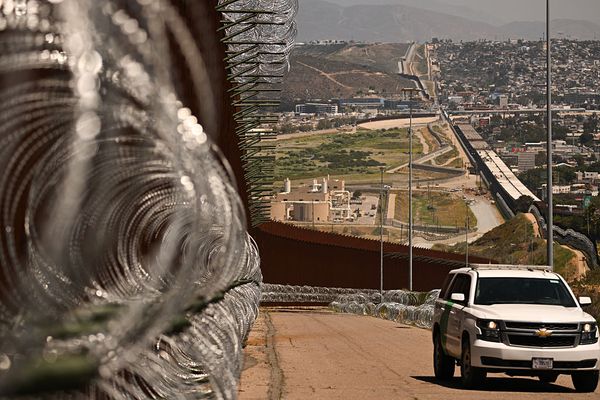
Jason Clare celebrated the meeting as a win.
Standing before the press, the federal education minister revealed he had hammered out a national agreement to improve safety in childcare services with his state and territory counterparts. “I think the work that we’ve done is going to make a real, meaningful difference,” he said.
The meeting in many ways was the culmination of the government’s response to the childcare crisis. Clare, seemingly with the full support of his state counterparts, announced a number of measures to make childcare services safer.
So, what are the policies the government has announced today, what difference will they make, and what questions still linger?
What did the government announce today?
We heard about a range of measures – the big two being the introduction of a national educator register, so authorities can know who has worked where and when, and a trial of CCTV in up to 300 centres nationally.
Additionally, all early childhood care and education staff will undergo mandatory child safety training; personal mobile phones will be banned while working directly with children; the commonwealth will conduct an additional 1,600 spot checks per year; the federal government will invest $22m for joint compliance work with the states; and information about compliance breaches at centres will become publicly available for parents to see.
What questions are unanswered?
The devil is in the detail and unfortunately there were a lot of details missing.
For instance, on the CCTV trial, Clare acknowledged the huge reservations a lot of people have about CCTV cameras in childcare centres. This, he said, is due to the threat that any information collected with CCTV could be hacked by paedophiles. “We’ve got to make sure that if this is rolling out in centres … that we get it right.”
So, what would that look like? What sort of regulatory requirements would be imposed on centres to install secure systems and create concrete policies around data retention and protection?
Well, that’s something we’ll find out in due course, said Clare. “We’ll commission an organisation to help us design the trial and to review it.” The trial will kick off in October or November and the results could be back by the third quarter of 2026.
There are similar unanswered questions on the much-touted national register of educators. Would it contain just the names and employment histories of workers, or also include allegations against them, police investigations into them and other “red-flag” behaviour that might help centre directors decide if someone is fit to be employed, as has been recommended multiple times?
Clare said the register would roll out in stages. Initially it will have the name of who is working in a centre and where they are, he said. “But over time, we want to build all of that information into it – so we can see employment history, so we can have the information that’s needed to identify red flags to tell us that someone’s moving quickly from centre to centre to centre, to be able to identify that somebody might be up to no good.”
As for what would be included in “all of that information” that will be built into the register, and what the deadline is for “over time”, Clare wasn’t specific.
What was missing from the announcements?
Obviously a lot of things, which Clare acknowledged. He said the measures announced on Friday were not enough to solve the problem: “Is it everything that we need to do? No, of course it’s not, but it’s the next thing that we must do.”
But there were a few big things that have been repeatedly brought up by reviews and reports into the childcare sector over many years that didn’t get a mention.
One was introducing an independent early childhood education and care commissioner who would be able to provide national oversight to this issue and hold various governments to account. This has been recommended by many experts and in many reports, including a Productivity Commission review of the sector released last year and the Weatherill review into the Victorian sector, handed down this week.
Another big thing was any talk of addressing the huge number of for-profit childcare providers and the way that the privatisation of childcare has, in the view of many experts, created a less safe sector.
There was some expectation that this might be discussed after Lizzie Blandthorn, the Victorian minister for education, on Wednesday reflected on the growth of the for-profit sector: “This is not how you would set up a childcare system if you were to set one up from scratch”, adding that “education ministers were looking forward to having a good conversation about nationalising childcare across the country”.
Asked about those comments today, Blandthorn was less direct, saying “what we do need to make sure that we do is have a national rethink and … we need to make sure that however a service is run, whoever owns it, that the best interests of the children are key.”
The only mention of the privatisation of the sector by Clare was a fairly dismissive comment in his opening remarks. He said that “Australia expects all of us to work together ... the private sector, the for-profits, the not-for-profits, they don’t give a damn about the difference or the breakdown or who’s responsible for what. They just want their kids to be safe.”
However, reports have found the for-profit sector, which now runs roughly 70% of centre-based childcares, performs worse than the not-for-profit sector on measures like pay for staff, staff turnover, staff vacancies – all things that experts say are crucial for creating a safe environment for children.
Were there any surprises?
There was one announcement that looks innocuous but could have an enormous impact over time, says Dr Caroline Croser-Barlow, CEO of The Front Project, an early childhood education think tank.
At the top of a list of legislative reforms agreed by the ministers, was “making the safety, rights and best interests of children the paramount consideration under national law”.
This might seem like bland lip service, but it could actually be a “real potential long-term sleeper of a change”, Croser-Barlow said.
What it could mean is a shift in the way decisions are made – to factor in as paramount the best interests of the child. Such decisions could include centre directors about staffing, or whether to share information about a concerning former employee during a reference check, or even – in the case of for-profit providers – in the way they defend spending decisions and shareholder profits.
“What it means is that, for example, when centre directors are making decisions about whether to stand down an employee, they’ll be thinking about not just about their industrial relations obligation, but what is in the best [interests] of the child.”
Because it will become law, it could also give directors some form of legal defence or justification for their decisions, given we know that fear of defamation has been a factor in preventing educators reporting concerning behaviour to authorities.
“That’s exactly the sort of thing it’s trying to get at,” Croser-Barlow said. “When you’re thinking about information sharing, or staffing … in the end you’ll be able to defend that the child’s interest are the primary thing.”







